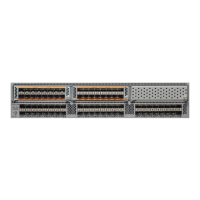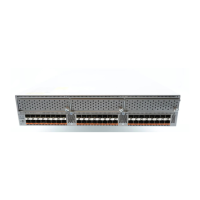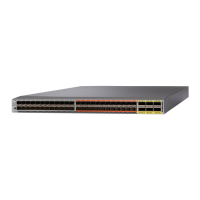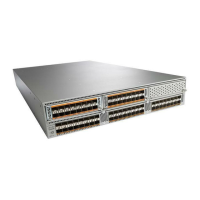Send feedback to nx5000-docfeedback@cisco.com
1-3
Cisco Nexus 5000 Series Switch CLI Software Configuration Guide
OL-16597-01
Chapter 1 Configuring VSAN Trunking
Configuring VSAN Trunking
Configuring VSAN Trunking
This section explains how to configure VSAN trunking and includes the following topics:
• Guidelines and Restrictions, page 1-3
• Enabling or Disabling the VSAN Trunking Protocol, page 1-3
• About Trunk Mode, page 1-3
• Configuring Trunk Mode, page 1-4
• About Trunk-Allowed VSAN Lists, page 1-4
• Configuring an Allowed-Active List of VSANs, page 1-6
Guidelines and Restrictions
When configuring VSAN trunking, note the following guidelines:
• We recommend that both ends of a VSAN trunking ISL belong to the same port VSAN. On platforms
or fabric switches where the port VSANs are different, one end returns an error, and the other is not
connected.
• To avoid inconsistent configurations, disable all E ports with a shutdown command before enabling
or disabling the VSAN trunking protocol.
Enabling or Disabling the VSAN Trunking Protocol
To enable or disable the VSAN trunking protocol, perform this task:
About Trunk Mode
By default, trunk mode is enabled in all Fibre Channel interfaces. However, trunk mode configuration
takes effect only in E-port mode. You can configure trunk mode as on (enabled), off (disabled), or auto
(automatic). The default trunk mode is on. The trunk mode configurations at the two ends of the link
determine the trunking state of the link and the port modes at both ends (see Table 1-1).
Command Purpose
Step 1
switch# configuration terminal
Enters configuration mode.
Step 2
switch(config)# no trunk protocol enable
switch(config)#
Disables the trunking protocol.
switch(config)# trunk protocol enable
switch(config)#
Enables trunking protocol (default).
Table 1-1 Trunk Mode Status Between Switches
Your Trunk Mode Configuration Resulting State and Port Mode
Switch 1 Switch 2 Trunking State Port Mode
On Auto or on Trunking (EISL) TE port

